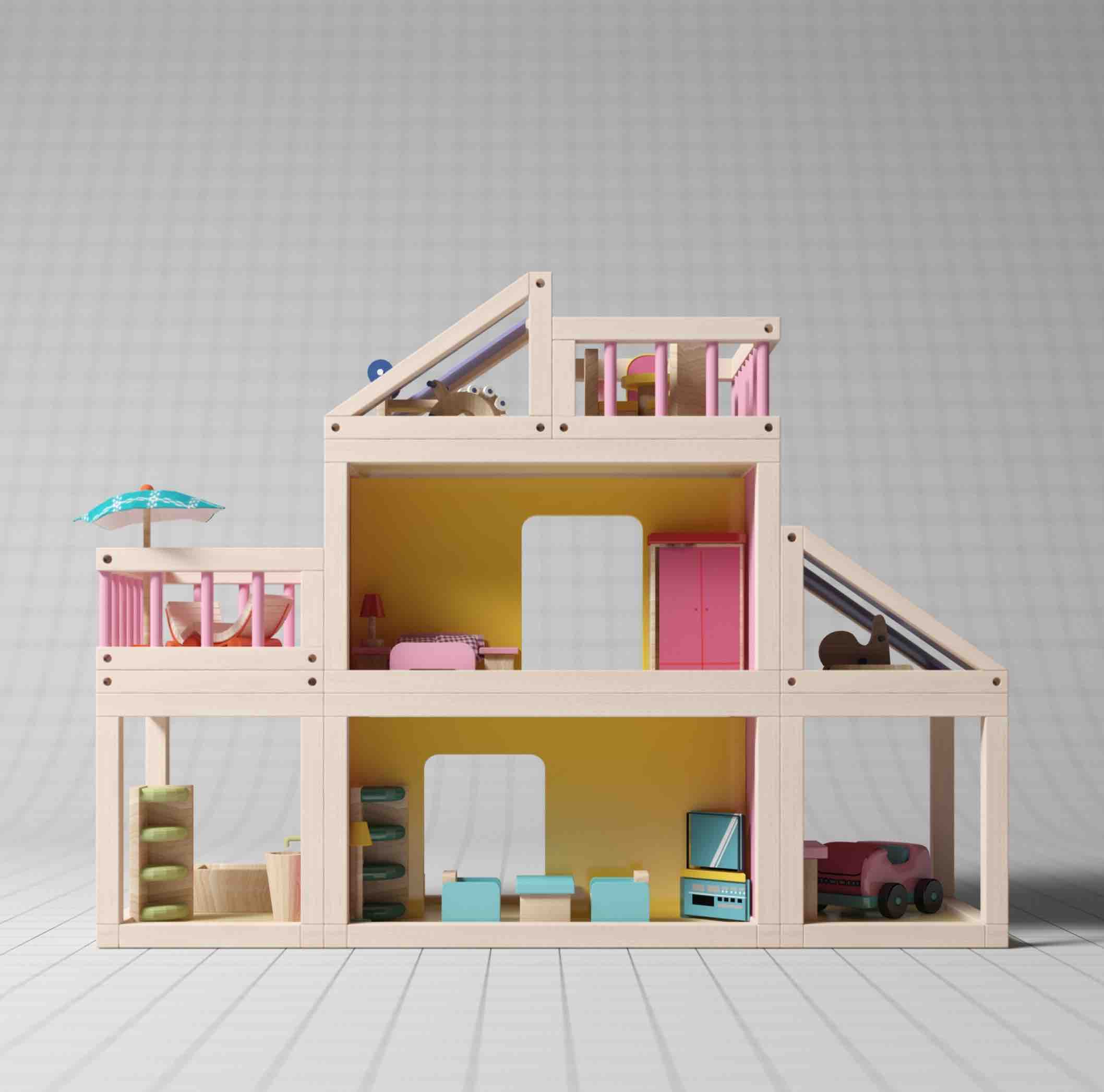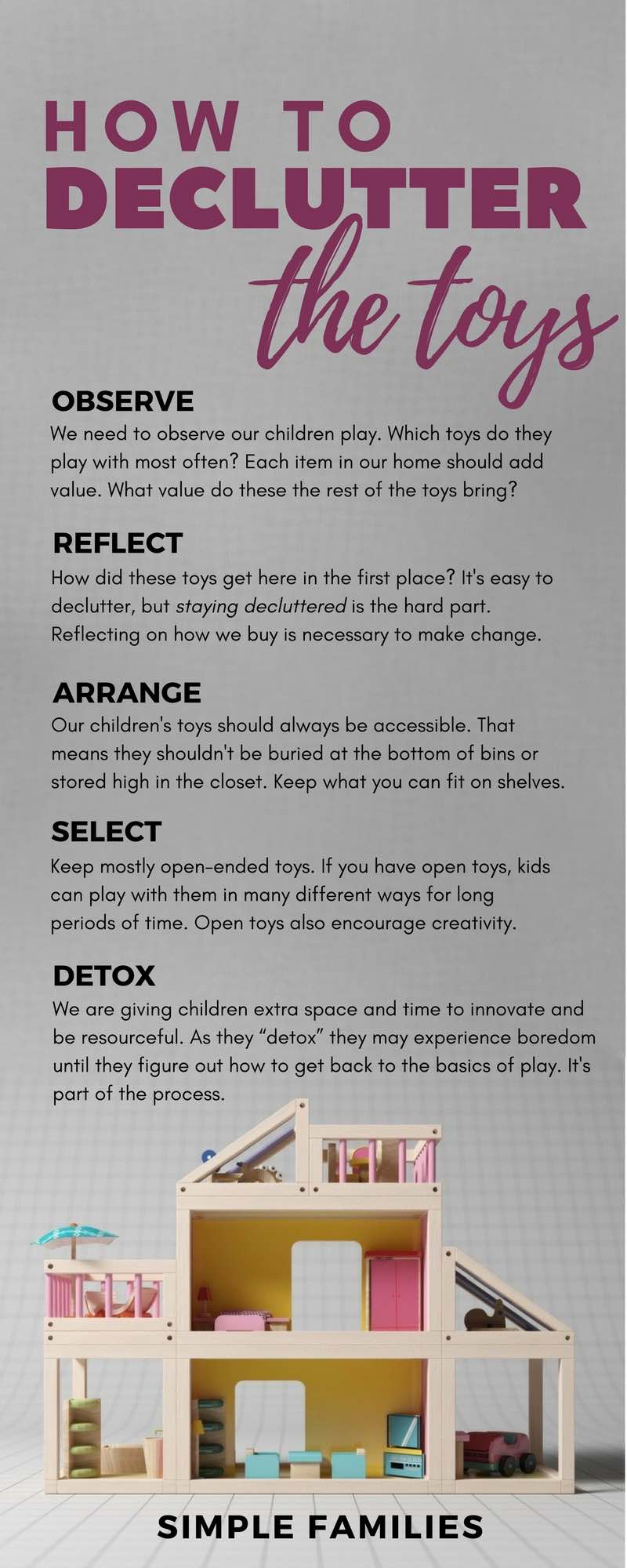 As parents, we want our kids to be happy. We live to see the joy beaming across those little faces when they tear into birthday gifts. A Christmas tree stacked high with gifts is about as American as apple pie.
As parents, we want our kids to be happy. We live to see the joy beaming across those little faces when they tear into birthday gifts. A Christmas tree stacked high with gifts is about as American as apple pie.
But what if I told you that having fewer toys is actually better for kids?
Because it is.
I know because I am a Mom of two young children. But I also have a Ph.D. in Child Development. I know a few things about what a young child needs to develop, grow, and thrive.
They need food, a loving family, a warm bed, and a few carefully selected toys.
What they don’t need? A bunch of mindless toy clutter. The research show us that when we cut the excess from the lives of children they focus better and have less stress. But getting rid of toys is complicated. What do you keep? What do you toss? So I am going to break it down for you.
Here’s how to get started.
Observe
Take a week and observe. Which toys get the most action? Which are neglected? I suggest taking notes on the favorites so that you can be sure to keep those toys. While observing, also start thinking about toys differently. Think about how each of these toys are adding value to your home.
We know that our children learn through play, therefore toys are the defacto tools for learning. We need to equip our kids with the best tools possible. Ask yourself the question–how are these toys benefitting my children? Examine each toy and decide:
- Does this toy offer opportunity for creativity?
- Will this toy help my kid to burn off energy?
- Can this toy be used in many different ways, by kids of different ages and genders?
- Does my kid LOVE this toy?
Everything that we bring into our lives and home should have added value–toys are included.
Reflect
You have to figure out how these toys got into your home. Did you buy them? Were they gifts from extended family members? Brian Gardner of No Sidebar explains that “we don’t need to look any further than the mirror—or our own closets—to realize our children’s excess is usually a byproduct of our own habits, or the result of spending choices we make.”
That means taking a good, long look at the way we buy and what it’s teaching our children. Anyone can declutter, but staying decluttered is the hard part.
We have to change the way we buy if we want to stay decluttered.
Arrange
When toys are buried in the bottom of bins and toy boxes they are difficult to access. When you store toys at the top of the closet they are difficult to access. If we want kids to play with toys and engage–they need to be out where they can see them.
I suggest placing toys individually on shelves (you can see how I did it in our playroom). Use short bins or trays to keep toys contained–that way kids can easily see what is inside. The last thing we want to do is invite our children to dump bins all over the place–and toy boxes invite dumping.
When we arrange the toys with care we are teaching our children to do the same. They are learning to care for, value, and clean up their belongings–rather than to toss them haphazardly into a box.
Select
When choosing which toys to keep in your home I recommend keeping mostly open toys. Open toys are toys that can be used in a variety of ways for a variety of different purposes. These can typically be used across varied ages and genders. These are toys that evoke imagination and pretend play, such as a puppet theatre, balance beam, balls, and art supplies. Closed toys are different because they are toys that can be completed or mastered. If your child finishes a toy and says “I did it!”, it’s probably a closed toy.
Examples of closed toys are puzzles and shape sorters. Closed toys are great too–but because they can be completed rather quickly, you will need to have a large number of closed toys to keep kids busy. With closed toys, kids will also grow out of them faster and purchases will need to be made more often.
I recommend keeping a ratio of 75% open toys to 25% closed toys in your home. This will help your child to play independently for longer periods of time. Having more open toys will also allow for more creativity and innovation in play.
Detox
First you observed, then reflected and selected–now you are ready to downsize. Downsizing the toys should never be a punishment. This is a happy and welcome change for everyone involved–so be sure that your attitude and language reflects that. Generally speaking, kids react very well to this change.
When we get rid of toys, we are giving our children extra space and time to innovate and be resourceful. But it’s important to keep in mind that as they “detox” they might experience boredom before they figure out how to get back to the basics of play. Don’t fill this temporary void and boredom with more screen time. Once you push through the detox period you will see some pretty amazing things coming from your child’s play. So are you ready to do this?
You and your family are going to love playing simply.
Like this? Pin it!

